What we've been up to for the past 8+ months

January 27, 2010 notes by Phil Eaton:
Time flies, and so does Armadillo!
The last full update was on May 5th of Last year.
It feels like an eternity has passed with enough milestones to construct a monument!
List of accomplishments since the last update:
Received the first
ever Waiver for Class III rocket flights on 5-29-09.
Flew the first
flight ever under a Class III waiver on 5-30-09.
Hosted NASA
dignitaries for the flight of the Methane Module.
Conducted the
first Boosted and Return Trajectory in front of NASA.
Returned the
Armadillo powered Rocket Racer to flight.
Filed second Class
III waiver application for LLC flights up to 200,000 pound seconds.
Worked with AST on
real time Maximum Range Calculations.
Prepared Level 2
LLC vehicle with 3 different tank sets and tested under tether.
Lincoln
Composites
SCI
Microcosm/Scorpious
(Go Scorpius!)
Awesome tanks, even better service!
Built Lunar Pad
and new pad for Boost and Return flights.
Flew Tethered
flights over the Simulated Lunar Surface.
First flight to
the moon, in flight abort. “We lost the moon…”
2 successful
flights to the moon with Practice MOD.
Hosted Level 2 LLC
and successfully satisfied the flight requirements in spite of
weather!
Watched Masten try
for the Level 1 LLC… Nice flight!
Watched Masten
Make qualified flights for Level 1 LLC, I wonder if they will be
ready…
Started Making
Boosted Hop Flights:
100 meters
200 meters
Watched Masten
struggle and almost qualify for Level 2 LLC, (Really Sweating!)
Masten is allowed
to fly on a 3rdday on Paul Breed’s scheduled attempt day?
Sad and confused…
Masten puts up 2
excellent flights, beating Armadillo’s landing Accuracy!
More Boosted Hop
Flights:
300 meters (1000
feet)
600 meters (2000
feet)
900 meters (3000
feet)
1200 meters (4000
feet)
The Birds, chaotic
motion study
Regulatory woes…
Many issues, many delays, Especially hard work for AST. (Great
Job!)
Rocket Racing
League Takes full ownership of rocket operations!
Rocket Racer Tail
2 Arrives… Propulsion Module install.
Purdue University
students begin SPEAR, Students Performing Experiments on Armadillo
Rockets.
More Engine
Development…
Rocket Racer T2
begins ground tests.
Rocket Racer T2
begins Taxi Tests.
Coming Soon…
Miscellaneous Media
Received and flew
under the First Class 3 Rocket Flight Waiver:
After starting the
process in an unofficial sense in Mid January, the actual waiver to
fly Class 3 rocket flights at the Caddo Mills Airport was received
from the FAA on 5-29-09. We had all of our ducks in a row waiting
for that moment, and minutes after receiving the waiver, we filed the
appropriate NOTAM’s and made the first flight under that waiver
the very next day to close out our Methane Module milestone
requirements for the NASA contract.
We thought it would be
an easy process to secure a waiver rather than a permit for
conducting flights at our home facility. This proved to be an
incorrect assumption for several reasons. First, it had never been
done under the new requirements, and second, neither we nor AST had
any clue of exactly how it was supposed to work when we got down to
the fine details. Fortunately, many of the same people that had
reviewed our permits in previous years were involved in the waiver
process as well.
We managed to plow
through most of the major issues, but the first waiver written was
severely limited in comparison to our expectations. It did allow us
to conduct the first few flights with relative ease, but we were
limited to the altitude we could fly because of an increased
requirement in the radius on the ground for flights above 300 feet
growing to over 2000 feet instead of the 1500 feet we had expected.
This all meant that we
would have to file another waiver application for the Level 2 LLC
flights and Boost and Return trajectories to over 300 feet, unless we
found a different location from which to fly and obtained special
permission from persons whose property fell within that radius.
Meanwhile, the first
free flight to be conducted at Caddo Mills was scheduled to begin.
We had the full crew available for that flight which was a luxury we
would not have for the remainder of the summer all the way through
the Lunar Lander Challenge.
This was a pivotal
flight because the final payment milestone of the NASA contract hung
on this one flight. It is hard to explain the feeling of
anticipation and nervous energy that surrounds you when you prepare
for such a flight. It is much the same as conducting flights for the
Lunar Lander Challenge, except that this was for a customer.
It had been so long
since we conducted a free flight that we nearly forgot what it felt
like.
In spite of the
exciting nature, it all went well. There were issues to work through
as there always seem to be. Practice and the subsequent experience
one gets while conducting dozens if not hundreds of test cycles kicks
in to make everything move forward until there is a legitimate reason
to stop. After the flight we noticed that we had used an excessive
amount of LOX in comparison to fuel and thus decided not to continue
with additional testing with that engine.
Hosted NASA Team
and other dignitaries for Demonstration flights of the Methane Mod:
Shortly after the first
flight of the Methane Mod, we scheduled a Saturday for NASA to bring
their contingency of media specialists and project team members,
managers and interns to witness firsthand what was happening in Caddo
Mills.
We managed to put up a
good flight that lasted about 60 seconds with a plan to perform the
first boosted hop trajectory immediately afterward. After the first
flight, everyone came out to the pad area and took their photos of
the vehicle with lots of good group shots. NASA photographers put
together a very nice video of the event. Unfortunately, I was
running the Armadillo video and I had problems with the on-board
video transmission. If the transmitter was working, the recording
units would fail. If the recording units were working, the
transmitter would fail.

(WMV, 12.8MB)
Conducted the
first Boost and Return Trajectory in front of NASA.
The Boosted hop went
well but we had programmed in a very conservative profile for the
first attempt. The flight was shorter than anticipated, but all of
the performance values fell right in line with what we expected.
We could have done a
3rd flight, but
John said it would only be showing off at that point and decided to
just have a nice information exchange for the next hour or so with
our guests.
One amazing discovery
was that the hot rocket plume on black Texas mud makes white glass.
Figure that one out!
Returned the
Armadillo-powered Rocket Racer to flight.
Finally time to get the
rocket racer back in the air!
As much as we like the
facility in Oklahoma, the North Texas Regional Airport in Denison is
much closer. This is still just over an hour from the Caddo Mills
facility, but if needed, we could be home at night with family.
Texas weather does tend
to have an impact on these things though, and unfortunately, we spent
a couple days watching weather blow through intermittently. Finally
we caught a break and were able to get another 7 flights in the air.
On Flight 14, test
Pilot Len Fox started performing the first few aerobatic maneuvers of
the rocket racer. This seemed a good place to do this since he has
actually performed in international aerobatic competition on that
very airport.
Over the next few
flights Len developed a very nice pattern conducive to crowd pleasing
aerobatics mixed with the acceleration performance and noise of a
rocket. Each flight would have approximately 8 ignition events at
show center, finishing with residual LOX dump and a glide back to a
landing.
Both time and weather
turned for the worse, and that phase of testing came to an end.
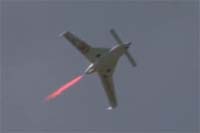
(Large WMV, 16.3MB)
(Small WMV, 4.1MB)
(Small MP4, 12.7MB)
Filed second
Class III waiver application for LLC flights.
The first class III
waiver Armadillo had was only good for a single propellant load, that
is to say a normal Level 1 LLC flight. In order to fly the Level 2
vehicle that came extremely close to the 200,000 pound second limit,
we had to obtain a special waiver for that vehicle.
Many of the issues we
faced with the first waiver were taken care of, but there were new
sets of challenges.
Worked with AST
on real time Maximum Range Calculation.
One of the main
challenges was the theorized explosive equivalency of a vehicle
crashing with LOX and Alcohol on board. Oddly enough, there was no
consideration of what the potential mix ratios would be, only a
downgrading percentage based on the propellant combination, and the
altitude from which it would fall.
As it turns out, the
worst case debris range came from an abort shortly after liftoff when
the bulk of the propellant still remained on board. After several
conference calls and a compromise that entailed John adding an
instantaneous maximum range calculation as abort criteria, we finally
received the waiver. This limited the maximum range of the vehicle
at any altitude and position so that the debris range calculated by
the AST team would not travel outside of the 1500 foot radius we had
available.
Prepared Level 2
LLC vehicle with 3 different tank sets and tested under tether.
As the time approached
for Armadillo to conduct the contest flights, we had gone through 3
different possible combinations of external pressurization tanks. 3
small Structural Composites tanks, 2 very heavy Lincoln Composites
tanks, or 2 extremely light weight tanks from Microcosm.
We had conducted some
flights with the SCI tanks and the Lincoln Composites tanks and were
just over the 200,000 pound second limit under tether. We calculated
that we could make it work, but our residual propellant would be
virtually zero at 181 seconds which did not leave us any margin for
error on landing.
Microcosm was in a
position to be able to conduct a very quick turn on 2 tanks that
would be custom made for us to place on the Level 2 vehicle. In
honor of their participation and extremely quick turn on the tanks,
we dubbed the Level 2 vehicle the “Armadillo Scorpius Rocket”.
They were able to turn
2 excellent quality tanks from order to delivery in less than 2
weeks. We feel we have an excellent partnership with these guys
moving forward, and they certainly have the ability to move at
Armadillo’s pace!
During this testing we
developed a few procedures that they will be able to use to improve
pressurization times of their tanks for aerospace applications. They
also passed along to us some of their expertise that we will keep
well into the future.
After conducting the
first series of tests we had enough margin for 188 to 190 seconds
with propellant to spare. Overall, the Microcosm/Scorpius tanks
saved us a whopping 65 lbs!
During our testing on
Labor day since everyone else was out at a barbecue, we put a few hot
dogs on some fresh and clean stainless welding rod in the ground near
the test pad. As it turns out, 199,960 pound seconds of rocket blast
from 30 feet perfectly cooks a hot dog in 182 seconds… There
may be a few bits of concrete embedded in the leading edge of the hot
dog though!
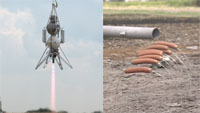
(WMV, 15MB)
Built Lunar Pad
and new pad for Boost and Return flights.
Meanwhile in parallel
several things were happening. One was the construction of the new
pads for the LLC event. Based on our earlier tests over the Texas
black dirt, we were tempted just to pour a 3 foot diameter flat spot
in the center of a 10 meter diameter circle marked with something
pounded into the ground at 1 foot intervals. Craters would have just
been holes dug in the dirt, and the rocks would have been the same as
we used, they would have just been set on the dirt rather than on a
pad. The X-Prize folks were intrigued with the idea and I think they
would have approved it if needed, but as it turned out, we received
approval for the pads quickly and were able to move forward with
concrete instead.
(The 2009 Lunar Lander Challenge update shows photos of the pad construction)
Flew Tethered
flights over the Simulated Lunar Surface.
We were able to fly
tethered flights over the moon several days after the pads were
poured. This would help us set up the on board video system that
John would use for fine tuning his position once over the pad.
First flight to
the moon, in flight abort. “We lost the moon…”
The
first Practice flight of the workhorse mod from Pad “A”
to the Lunar Pad was moving along well until just over the lunar pad
we saw the engine begin to spit stainless in the plume. John
commanded the Mod down from an altitude of 12 meters, but at 3 meters
it had eroded a hole in the side of the nozzle and the resultant
thrust vector began to push us away from the pad. The erosion was
compounding with every second, and finally the rocket could not
maintain the appropriate angle and went into an abort mode.
The
vehicle fell in soft dirt from an altitude of about 12 feel.
Everything worked as it should, and there was very little damage.
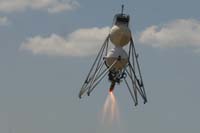
(WMV, 4.5MB)
2 successful
flights to the moon with Practice MOD.
We reconfigured the Mod
quickly and resumed flight testing. This was quickly followed by 2
more successful translations in which all went well.
Hosted Level 2
LLC and successfully satisfied the flight requirements in spite of
weather!
The day had finally
arrived for Armadillo to host the Level 2 Lunar Lander Challenge at
home. Murphy says that anything that can go wrong will go wrong. We
had beaten him in most regards when it came to the rocket in recent
days, but in terms of the weather, we were dependant on the hand of
God alone.
The rain clouds
gathered and began to sprinkle on the crowd of several hundred. Some
came from town and some from several states away. Fortunately we had
everything roped off in the large hanger for just this contingency.
It did afford us all
the luxury of spending some time with family and friends before we
made the flights, which after all was said and done, turned out just
fine.
We experienced a 6 hour
rain delay, and had permission from the FAA to fly as long as we
stayed below cloud level. This meant that we had to have a minimum
ceiling of about 200 feet in order to have a reasonable margin.
We pulled out the
vehicle and lined up for a countdown while we headed to the pads.
Spirits in the crowd had not been dampened in spite of the rain, and
hopes were running high as we were finally executing as practiced.
Once at the pads, the
rain started up again, but all indications were that the rain would
pass in minutes so we charged ahead.
All went well during
the first propellant loading ops until we were about to disconnect
the high pressure helium fill line. We had a rather large helium
leak coming out of the Swedgeloc valve. With everything still under
pressure, we managed to fix the leak and proceed, all while still on
the clock.
All cameras rolling,
everyone in position. I was stationed near the landing pad with
Matt’s HD camera. He had given me a crash course on operating
all of his cameras since that weekend was the one weekend he would
not be able to attend. The vehicle came up just as planned and
burned off a half minute or so of propellant before proceeding
skyward. Once translation started though, I could see that the
vehicle was rolling counter clockwise and not correcting. I knew it
would not affect positional accuracy, but still I knew something was
not quite right.
The vehicle began the
descent phase over the pad and hovered over the moon for about 30
seconds at close range. John began to try his fine tuning procedure
using the visual cues we had developed before, but instead of getting
closer to center on every adjustment, it got further from center.
Confused and frustrated, John set the vehicle down at 182 seconds.
The judges measured us
over a meter from the center of the pad. We discovered that one set
of roll thrusters had stopped working during the flight and thus the
vehicle was allowed to roll slowly. The on board video did benefit
from this, unfortunately the downward looking cameras John used for
accuracy positioning were now backwards on the screen so that every
movement he made was moving the rocket 180 degrees from the intended
direction.
This caused several
problems. The fill and pressure lines were now on the opposite side
of the vehicle from where we anticipated, and thus we got off the
checklist in order to accommodate the new procedure on the fly.
Unfortunately the diverter caps were not installed on the regulated
pressure lines coming out of the high pressure tank, and the high
pressure tank although down to only 180 PSI was not vented.
When we started the
checklist for the return flight, the actuator check revealed our own
need for the checklists and why we need them. 2 hoses on actuating
the high pressure regulator managed to swing through the air and
catch a couple of the guys unsuspecting before they could get out of
range. Injuries were small to the body yet painful to the ego.
Still we continued forward with our goal in sight.
The remainder of that
operation was uneventful. Everyone was in flight positions, and the
rocket finally came to life for the journey back from our simulated
lunar outpost.
The very same position
I had manned during the first flight was now experiencing a
significant increase in sound energy since the rocket at liftoff was
producing nearly 4X the thrust it had at landing.
The air was thumping my
chest as the rocket hovered peacefully just off the surface, finally
climbing skyward heading for home on the final leg of the Level 2
journey.
3 minutes, or even 2
hours is such a small slice of time that one would hardly notice the
passing on any ordinary day. On this day however, a journey that was
started by 9 Armadillos many years before had this team’s
emotions stirred with an intensity that matched the roar of Scorpius
gracefully moving through the sky.
The past few years had
brought Armadillo to a unique place of the Lunar Lander challenge
being little more than a distraction along the path of beginning work
for our customers. Still, past shortcomings in previous years
haunting the memory drove us to once again fly the challenge. This
was no longer just for the money, but for the pride of the
accomplishment.
As time would tell in
the weeks that followed, the pride of the accomplishment of having
completed the task first would have to suffice for much more than we
thought.
Scorpius finally came
down over the targeted position, and without making any adjustment to
the GPS final position, came to rest within a foot of the target in
the center of the pad.
(See the 2009 Lunar Lander Challenge update for full media coverage)
Watched Masten
try for the Level 1 LLC… Nice flight!
With hardly any time to
rest, the following week held the excitement of watching the Masten
Team fly their vehicle in an attempt to qualify for the second place
level 1 Lunar Lander Challenge. All those years of watching
Armadillo from a distance, they finally have viable hardware to fly.
I am jealous in a way.
I wish we could have had our shop only a mile or so away with all our
tools, and all our spare parts near. The first year we discovered
just how much difficulty it adds to have to travel and conduct
operations in a location removed from home base. I am also jealous
because I wish that during the first few years we would have had the
option to say, “Ah well, we can give it another shot next
month…”
The upside is,
Armadillo is now prepared as well as anyone in the world to take the
show on the road. We have the X-Prize folks and the first few years
of LLC to thank for that.
Meanwhile, Masten puts
up a beautiful flight in their first attempt at Level 1. The rocket
looks great, and significantly different than their first few designs
I might add. From the look of it, they settled on an excellent
design, and applying their engine to that design has worked well for
them. The landing was so precise, that was actually the moment I
became nervous. Unfortunately, they had a problem in the engine and
had the good sense to fix the problem and wait until the next window
rather than risk the vehicle on a chance that it might work. That
would come later!
Watched Masten
Make qualified flights for Level 1 LLC, Getting Nervous…
What seemed like a very
short time later, Masten’s second Level 1 window arrives. This
time everything performs so well that they nail the landing accuracy
to less than 6”. The flight profile still causes a certain
degree of alarm after watching the Armadillo vehicle for so many
years, but I have no argument with the method. Kudos to Dave and
crew for finally getting everything whipped into shape!
Still, do they have
enough time to get their Level 2 vehicle ready before their last
flight window?
Started Making
Boosted Hop Flights: 100meters, 200meters…
It is time to focus on
the tasks at hand. Immediately after the LLC flights were done, we
could not do anything. That rain that started on the day we managed
to qualify for the Level 2 LLC did not let up. In fact, it continued
to rain for what seemed like 2 months straight after that.
The very next
opportunity to fly was quite some time later, and we were able to
conduct flights to 200 meters under the current waiver.
Unfortunately, the weather did not hold out for us and the rains
resumed making ponds appear where grass once ruled the surface.
Watched Masten
struggle and almost qualify for Level 2 LLC, (Really Sweating!)
For Armadillo, the
struggles Masten experienced with their Level 2 vehicle were
reminiscent of issues we had in years past. You think you have
everything working fine and something completely unexpected comes out
of nowhere to thwart what would otherwise be a routine operation.
Ignition issues first,
then what looks like a successful flight ends in a mass of melted
plastic and wire preventing a return trip. Even worse, a fuel leak
is discovered that caused the problem and appears to be an issue with
the tank. Well it was a good run. There is always next year…
Wait a second,
there is activity in Mojave on the eve of Paul Breed’s first
flight window…
Later in the evening
following the last attempt that occurred during 2 scheduled days for
Masten, rumors were flying in regards to a possible attempt to be
made on a third day.
As history bears to us
all as spectators, Masten was able to squeeze just enough
functionality into their system to make 2 spectacular flights within
the timed window. As a competitor, the feeling is somewhat
different…
First of all I want to
recognize the accomplishments of the Level 2 profile flights by the
Masten team as AWESOME! Now I must remove my spectator hat and
address the accomplishment from the competitive point of view.
Sad and confused…
Warning!
Armadillo Perspective ahead!
Many of the readers
here will have the opportunity to criticize the statements made by
members of the Armadillo Aerospace team as “Sour Grapes”.
Feel free to do so!
As much as we cannot
base business plans on prizes, we still do not savor the prospects of
being second in any regard. We are competitors with a yearning for
the highest honor in any competition.
When the difference of
a single moment, decision, or event, affects your pocketbook to the
tune of $500,000.00 and it is completely out of your control, it
tends to make one feel a certain sense of desperation. The
desperation is in regards to protecting ones financial interests for
your own company, your own customers, and your own sponsors.
We think the Masten
guys are a great bunch. They are very capable of designing and
building hardware, and responding to the issues that arise in testing
real flight hardware. Here was the time for them to “Risk
everything” for the shot at the prize. They did, and it paid
off.
More important than
this however is what do they do with that success? They are faced
with the same challenges as Armadillo now in a transition from
“Prizes to Profits” as AST Director George Nield stated
during the Award ceremony.
Even though everything
that transpired was within the terms of the rules for the
competition, we didn’t automatically wake up the next day
feeling good about ourselves in regards to the outcome.
Masten puts up 2
Excellent flights, beating Armadillo’s landing Accuracy!
This in no way is
intended to belittle the accomplishment of the Masten team. The
accomplishment was a great one regardless of the circumstances that
enabled such a marvelous demonstration of teamwork on their behalf,
including people that are not on their payroll. They took advantage
of every opportunity extended them and succeeded in the end.
Other teams out there
are still hungry to prove themselves however. If prizes are offered
again with specific performance and operational goals that are within
their grasp, innovation within the New Space community will continue.
Drama, you want drama?
Typically, drama is the thing our regulators want to avoid. This
time however, it was there in buckets, and all within regulatory
compliance. Nothing brings attention like good drama whether good or
bad, and that’s all that counts… or is it?
End
of Armadillo Rant.
More Boosted Hop
Flights:
300 meters
(1000 feet)
600 meters
(2000 feet)
900 meters
(3000 feet)
1200 meters
(4000 feet)
As soon as it was
possible, Armadillo began making flights to higher altitudes to
evaluate the characteristics of tail first descent. These flights
proved to be extremely informative as soon as we began to exceed 1000
feet. Following is video from the 3000 foot flight. It ended up
being the most spectacular of the tests due to camera angles and
such.

(WMV, 10.6MB)
We could go into some
of the specific details we learned during these tests, but in the
interest of prudence, we felt that some of this information might
make it just a bit too easy for our competitors.
The Birds, a
study in chaos.
While preparing for
some of the boosted hop flights early in November, an ocean of
grackles swallow the shop and surrounding area. The disadvantage of
having an office with a window overlooking the runway is that events
such as this turn out to be rather distracting.
Finally I succumb to
the need to pull out Matt’s camera and commence recording some
of the amazing sound and imagery we experienced on a completely
windless day. These videos capture a small portion of the overall
experience, and the real footage taken in high definition is far
beyond what you see here.
We estimated nearly one
million birds on the ground in front of the hanger and on top of the
hanger. We suppose there were up to three or four acres of ground
covered with birds at any one time.
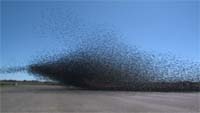
(WMV, 14.4MB)
Initially reminiscent
of an Alfred Hitchcock thriller, we see that some of the chaotic
motion seems to be related to their collective sense of avoiding a
threatening object. Interesting things happen when we throw
ourselves in the middle of such a reactive dark mass. Russ plays the
part of antagonist as we watch the waves of chaos anticipate his
approach and resettle.
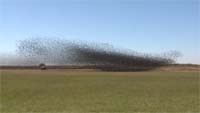
(WMV, 6.4MB)
Now as the entity finds
itself beyond our influence, what is it that motivates such change in
direction? Is it a competitive mob fighting for a limited amount of
food or merely a social interaction of birds of a feather flocking
together? I think I will stick to the physics of injector and
combustion flow dynamics; it is easier to figure out!
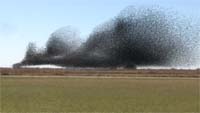
(WMV, 13.4MB)
Perhaps working with
our regulatory agencies in concert is as much artistic and chaotic as it is technical.
Naw, it couldn’t be, working with FAA makes much more sense.
Doesn’t it? As much as we seem to be swallowed by regulations
that seem chaotic, I must say that the collective sense of avoidance
is not their nature anymore. AST has done especially well in helping
all of us with the regulations we face. Every would-be obstacle has
been addressed with patience and logic by the AST team. Thanks!
Regulatory woes…
Many issues, many delays, Especially hard work for AST.
Shortly after
completing this series of tests, we had come to the end of our first
waiver. The plan was to have the next waiver in place before the
expiration of the first one. Unfortunately, there is always
something that comes up to adjust the best laid plans.
Without going into
great detail, suffice it to say that AST stepped up and took care of
many interdepartmental issues within the FAA in order to get
everything done for us before the next solid VTVL flight deadline.
Rocket Racing
League takes full ownership of rocket operations!
Meanwhile, a milestone
for Armadillo Aerospace and Rocket Racing League comes to fruition.
For the very first time, a complete system was operated without the
presence of any of the manufacturer’s representation on site.
This may seem like a small thing in light of the fact we all knew it
would eventually come, but getting there is always a good thing.
Training was of extreme
importance and mixing the Armadillo expertise with Aircraft
operations expertise provided by Rocket Racing turned out a nicely
simplified system that the customer could use with ease and
regularity.
Mike V., Marty, Deszo,
are all full time Rocket Racing Employees now. Assisted by contracted
chief test pilot Len Fox, they have been on top of the process of
transferring operations exclusively to Rocket Racing. They have done
an excellent job taking ownership of all the details from ordering
supplies to making sure all of their logistics are handled on site.
Len has been involved
with the project since the beginning, and Mike Vinther began working
with Armadillo operations well over a year ago. Marty came on board
with Rocket Racing about 6 months ago, and Deszo joined the fray in
the last few months to complete the compliment of staff they needed
to be autonomous.
With the introduction
of a second aircraft, it follows logical sense that a second pilot
would be brought on board to begin training. They contracted a second
test pilot, Dave Morss, to fit the bill. He is an extremely capable
test pilot that has done work with Len in the past.
The whole team has worked
tirelessly as of late setting up their own ground support equipment
including a nice RSV (Rocket Service Vehicle) and have the procedure
requirements trimmed down for safe operations using only 4 people.
This crew is well on its way to some really cool stuff!
Rocket Racer Tail
2 Arrives… Propulsion Module install.
Meanwhile, Rocket
Racing League delivers the second airframe optimized around the
Armadillo Propulsion module. The new airframe has many differences,
and will certainly have better visibility with the pop up canopy
versus the gull wing doors.
There are very little
differences between the two propulsion modules, however there are
some changes that are more conducive to reliability, weight, and
service, based on our experience with T1. From an operations
perspective however, the two systems are virtually identical.
Purdue University
students begin SPEAR;
Students
Performing
Experiments on
Armadillo
Rockets.
With time coming down
to the wire on the regulatory side of things, AST managed to get us a
waiver just in time to resume VTVL flight testing with the addition
of SPEAR 1.
Professor Steven
Collicott and some of his students arrived in mid December after
finals and just before Christmas in hopes that they could integrate
their experiment onto an Armadillo rocket. They hoped to see the
effect of a reduced gravity environment with liquids of different
masses.
The students did a
great job coming up with a system that would operate in a
semiautonomous state after arming just before flight. Everything was
packaged neatly and ready to go.
We conducted a tethered
hover with their experiment on board and as always, Murphy shows up
and things that worked perfectly back home began causing problems.
After an all night
session in the hotel, they got everything running again with high
hopes for the next day.
Unfortunately, due to
no fault of theirs, the chain of events that followed did not allow
them to collect the anticipated data. Unfortunately there was no way
to attempt a repeat on the experiment, so everyone had to be
satisfied with the integration exercise, and resolve to try again
soon.
The students at Purdue
University are blessed with a great professor in Steven Collicott.
He uniquely captures the essence of a good experiment and provides
excellent guidance for what to expect when it is complete. We look
forward to many more opportunities to serve Professor Collicott and
his students at Purdue.
More Engine
Development…
On a side note,
Armadillo had been conducting some experiments on a more efficient
version of our film cooled engines with the new linked valve setup.
This was a process ongoing for the 2 or 3 months prior to the visit
from Purdue.
Sometimes it is a good
thing to have curious minds asking good questions…
During a tour of the
shop I was explaining how our particular rocket engines worked.
While doing this I discovered that an injector we had performed no
less than a half dozen tests on was plumbed up backwards from what I
was pointing out. This immediately explained much more to me than I
would have cared to admit at the moment.
Suffice it to say that
it is indeed possible to film cool an engine with LOX…
Rocket Racer T2
begins ground tests.
With some testing
before and after Christmas, the propulsion system takes its final
shape and is ready to make the first bit of fire.
Since we have done so
many of these types of systems before it should not provide us with
anything new…
Everything is rolled
into place, and sure enough, the minor issues of a cryo exercised
fitting on the first fill gives us an opportunity to fix a quick
leak. No other problems seem apparent.
In spite of minor
differences in plumbing routs, and valve positions, all appears to be
normal with the first run. This is a good thing, because tomorrow
the FAA comes out to do the once over inspection for the certificate.
Rocket Racer T2
begins Taxi Tests.
The FAA inspection went
well. They found a couple of things for us to fix and completed the
paperwork. We ran the engine for them so they could verify it did
what it was supposed to do, and all was well.
After they left, we
still had enough daylight to roll out and conduct the low speed taxi
testing. This testing will go through the basic operations of the
system as if we are preparing for flight, but the engine thrust will
be terminated well before rotation velocity.
Len ran through the
paces a few times and made sure to test the brakes in varying degrees
of urgency. Everything looked good after a half dozen four second
runs, and was pulled back into the hanger to prepare for travel the
next day.
It is somewhat more
difficult to move two planes at the same time, but still not too bad.
Of course it is painless to Armadillo because the Rocket Racing
League crew handles that marvelously!
Logistically it made
sense to conduct flight testing on both aircraft at the same venue
and at the same time. Besides, the only way to put two birds in the
air at the same time is to get the second pilot up to speed as
quickly as possible with a bit of right seat time in T1,
transitioning to the left, then into T2.
Coming soon!
The next update should
hold some very interesting content including simultaneous flights of
Rocket Racers as well as further news on multi-Mod work.
There has also been a
new contract signed with NASA that has us building on the work we
already started. That is all I will say for now, details later.
Hopefully it won’t
take us six months to get an update out again, but that is the
penalty for doing all of the work we have in front of us!
Miscellaneous Media
High speed video of one of the "tug-of-war"
tethered hovers showing just the take-off and shutdown.
(WMV, 13.4MB)

Miscellaneous photos
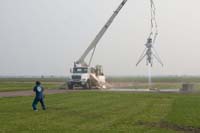
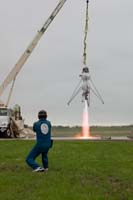
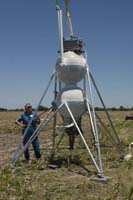
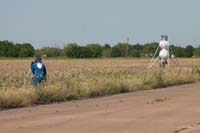
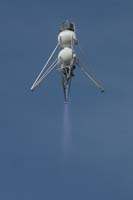
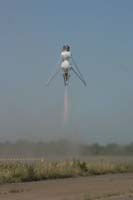
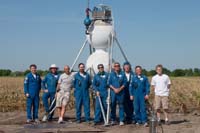
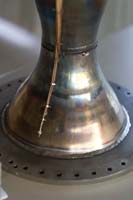
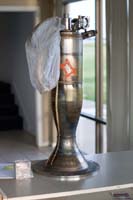
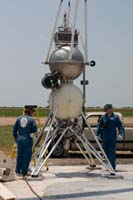
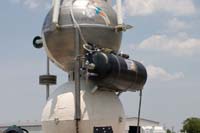
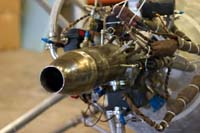
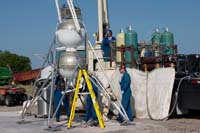
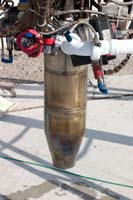
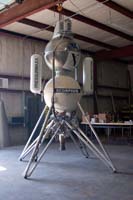

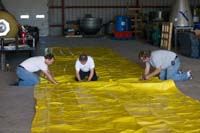
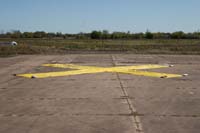
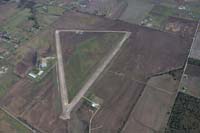
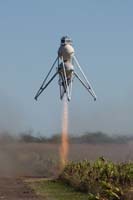
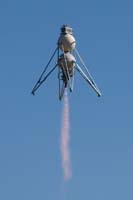
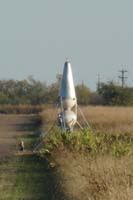
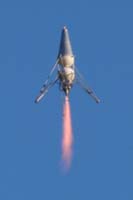
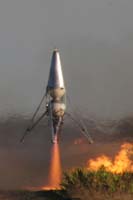
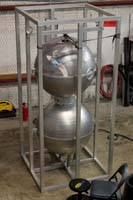
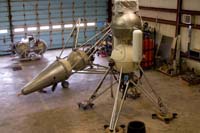
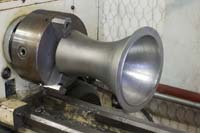
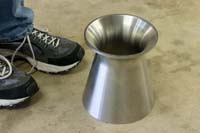
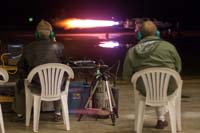
Courtesy of NASA
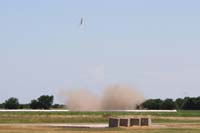
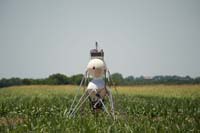
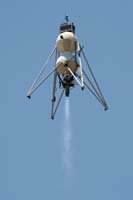

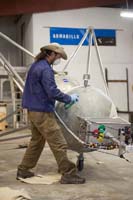
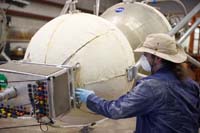
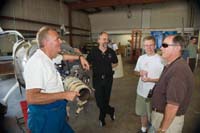
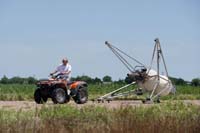
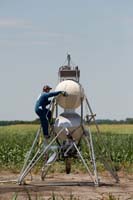
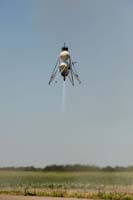
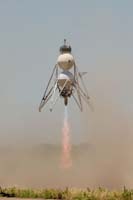
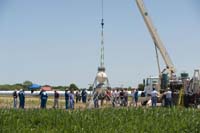
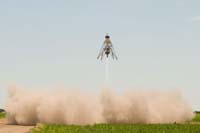
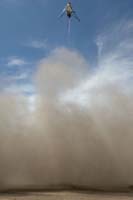
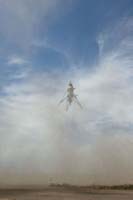
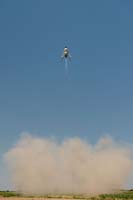
|